The Bengal tiger is a Panthera tigris tigris subspecies population. You can find Bengal tigers on the Indian subcontinent, including India, Bangladesh, Bhutan, Nepal and Southwestern China.
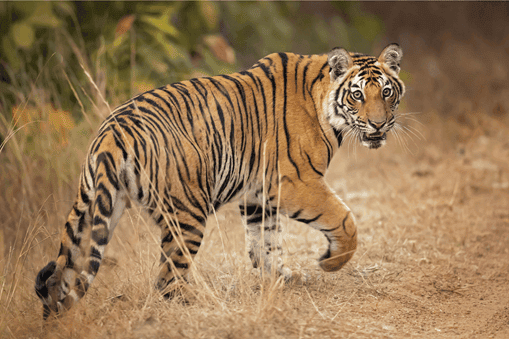
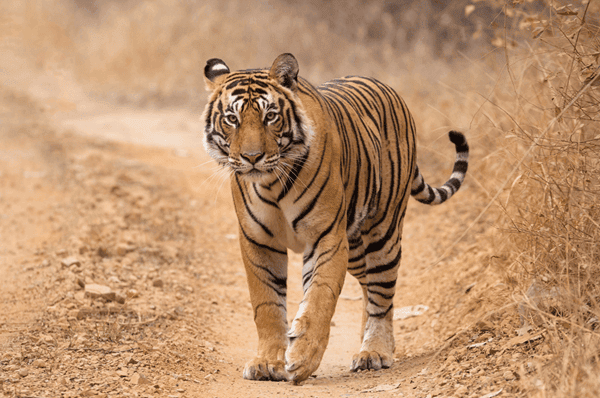
Classification: A population of Panthera tigris tigris.
Panthera tigris tigris is the nominate tiger subspecies – the original population of a species that has been split into subspecies. Within the Panthera tigris tigris subspecies, the Bengal tiger is currently considered a clade – a group descended from a single ancestor. The Malayan, Indochinese, South China, and Siberian tigers are also separate clades within this subspecies. (Note: tiger species taxonomy is currently under review by the IUCN SSC Cat Specialist Group.)
Conservation Status: Endangered
Population size: The Bengal tiger population is alarmingly low, with estimates suggesting it is around 5,574.
Meaning of the word: Bengal is a cultural term referring to the eastern part of the Indian subcontinent at the top of the Bay of Bengal (the northeastern part of the Indian ocean). The word is most likely derived from the ancient kingdom of Vanga
Lineage: The Bengal tiger is a member of the Panthera lineage, along with other tiger populations, the lion, leopard, jaguar, snow leopard and clouded leopard.
.Interesting Bengal tiger facts
- The Bengal tiger has the longest canine teeth of any living cat (approximately 3 to 4 inches long).
- They have large territories – up to 200 square miles.
- If it’s necessary, the large Bengal tiger can climb trees.
- They are skilled swimmers
- Because of their strength, they can kill prey quickly.
- A Bengal tiger can eat up to 80 lbs. of meat at a time.
- Their hunting is only successful once out of 20 attempts.
- After a successful hunt, they can go without food for several days but must have water every few days.
- Bengal tigers are sometimes called Royal Bengal tigers because a hunter from the United Kingdom’s Royal Family once hunted a Bengal tiger in the Sundarbans.
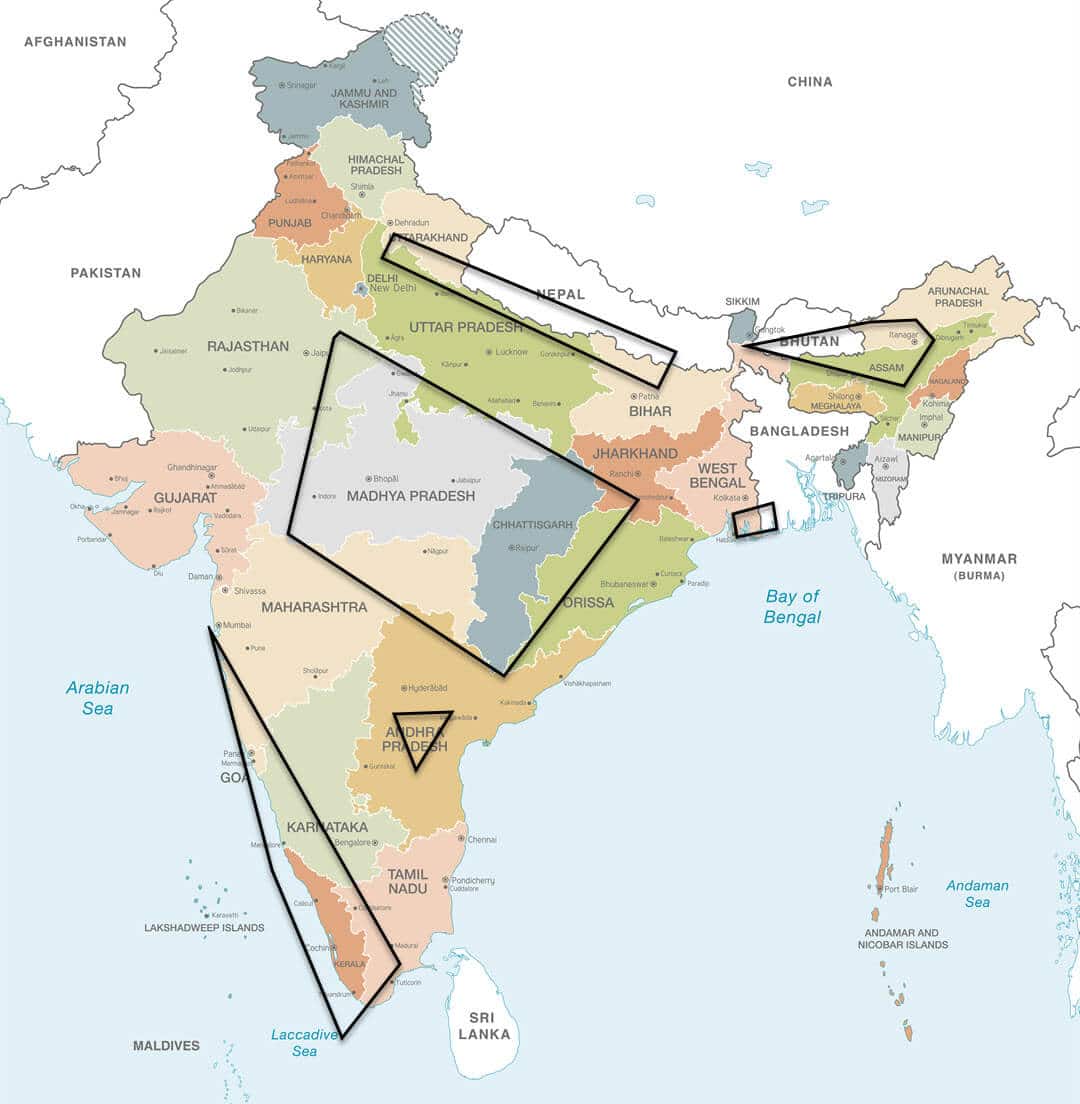
Origin and history (evolution)
It is believed the Bengal tiger has been living on the Indian subcontinent for the past 12,000 to 16,500 years. Historically, its range included Asia’s Indus River, most of India, southern Nepal, western Pakistan, Bhutan, Bangladesh, and southwestern China. Now, you will only find the tiger in India, Nepal, and Bangladesh, and its previous range in China.
The tiger was first referred to as Felis tigris in 1758. It became part of the genus Panthera in 1929.
Physical appearance
Bengal tigers have yellow-brown to orange fur with dark stripes (brown to black). Their belly and the inside of their legs are white. The tiger’s tail is orange with black rings. There are also tigers who are all white with dark stripes.
| Bengal tiger | From | To |
| Weight | 440 lbs. | 570 lbs. |
| Length | 72 in. | 83 in. |
| Tail | 33 in. | 43 in. |
| Total length male | 9.3 feet | 10.2 feet |
| Total length female | 8.3 feet | 9.3 feet |
Location and habitat
Bengal tigers typically inhabit forests, including tropical forests and dry forests, as well as mangroves and grasslands. Males’ territories sometimes overlap with those of several females for mating opportunities.
A 2008 survey conducted in India found several places with tiger populations that could possibly be connected.
- Sivaliks-Gangetic flood plain (north India)
- Central India highlands (the states of Chhattisgarh and Madhya Pradesh)
- Eastern Ghats (a range of mountains along India’s eastern coast)
- Western Ghats (a range of mountains along the western coast of the Indian peninsula)
- Brahmaputra flood plains (a river flowing through southwestern China, northeastern India and Bangladesh)
- Sundarbans National Park (West Bengal, Inda)
You can also find tigers in various Indian national parks and reserves.
There are three isolated populations in Nepal. In Bangladesh, tigers mainly inhabit the Sundarbans forest and the Hill Tracts in southeastern Bangladesh. In Bhutan, tigers have been reported to be in the Himalayan foothills. A small population of tigers is also located in southeastern China.
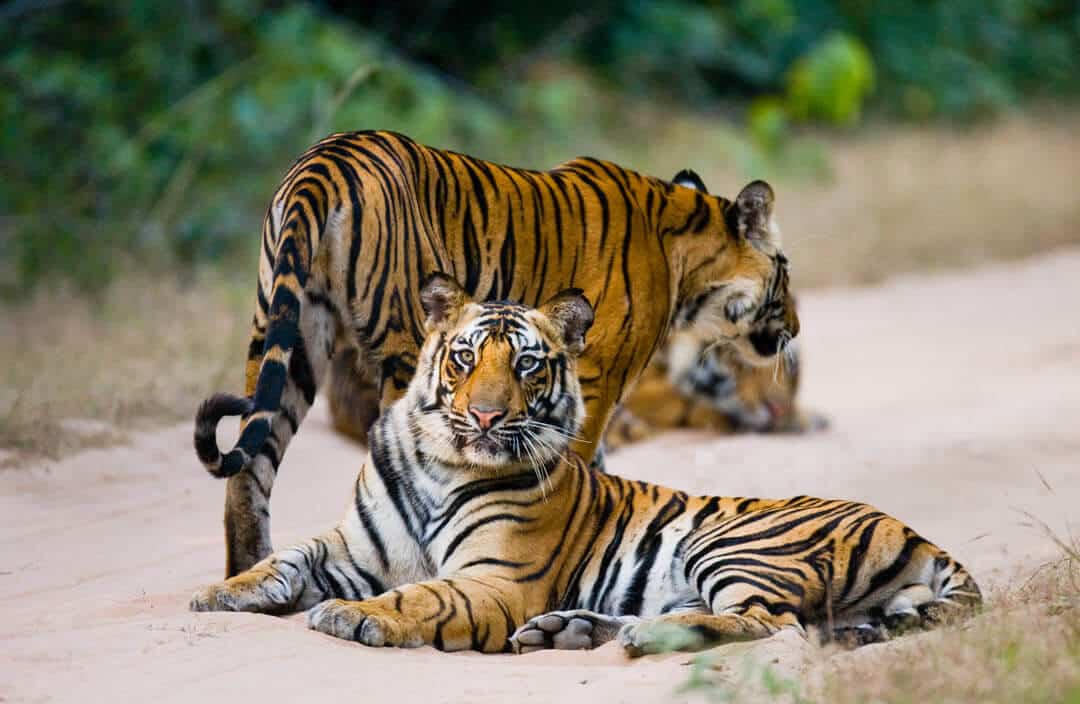
Image: Wild tigers sit on a road in Bandhavgarh National Park, Madhya Pradesh, India. The park, a mix of tropical forest, grassland, and Sal trees (a tree native to India), is spread over the Vindhya hills and is known for its large population of Bengal tigers.
Bengal tiger behavior
Tigers usually lead solitary lives but will maintain contact with other tigers. Tigers establish home ranges with sufficient shelter, water, and prey. Male tigers typically have a home range that includes several females in the area. A female and her offspring are considered the tiger’s basic social units.
Hunting and prey (diet)
Bengal tigers hunt within their own specified home range. They prey on large hoofed mammals like water buffalo, serow, chital, and sambar and on boars, hares, porcupines, and birds. Sometimes, the tigers also prey on livestock. They have been known to kill other predators like the crocodile, Asian black bear, sloth bear, and Indian leopard. It is rare for them to attack an elephant or rhinoceros.
The tiger, with its immense strength and agility, attacks its prey from behind or the side. It first bites the animal’s throat to kill it, showcasing its powerful jaws, and then drags it to a safe location to eat.
Mating, reproduction, and lifespan
There is no specific mating period for tigers. However, most cubs are born in December and April. Males reach maturity at around 4 to 5 years, and females at around 3 to 4. A female’s gestation period is approximately 104 to 106 days. Litters, on average, are 3 to 5 cubs. The cubs are sheltered in caves, thick brush, or tall grass. A newborn Bengal tiger cub will typically weigh 1.7 to 3.5 lbs. The cubs are born with thick fur that disappears between 3.5 and 5 months.
Females play a crucial role in the tiger family structure, raising their offspring for around two to three years before they leave to establish their own territories. Male offspring typically move farther away than female offspring.
Their lifespan is around 20 years in captivity and 10 – 15 years in the wild.
Bengal tiger conservation
The survival of Bengal tigers in the wild is threatend by habitat loss, habitat fragmentation and illegal trade. You can find tigers in various protected areas throughout India and Nepal. As of 2024 there are currently 55 tiger reserves in India.
In April of 2023, India signed a non-binding tiger reintroduction agreement with Cambodia. The last time a tiger was seen in Cambodia was 2007.

Bengal tigers in culture
The Bengal tiger has long been depicted in images and artifacts on the Indian subcontinent. It is also mentioned in folklore, mythology, literature, and songs. The earliest depictions of the tiger can be found in rock art in Madhya Pradesh, dating back over 10,000 years.
- In India, the Bengal tiger is associated with the deities of Shiva and Durga.
- Lord Ayyappa, a Hindu deity, is depicted riding a tiger accompanied by her cubs with a vessel of tiger’s milk.
- The Bengal tiger is the national animal of Bangladesh
- Bangladesh banknotes have an image of a tiger
- Images of the tiger can be found in the Indus Valley Civilization, a Bronze Age population in southeast Asia.
- The Bharias of Central India believed in a tiger god called Bagheshwar.
- The Warli tribe of western India worshipped the tiger.
- The tiger symbolized Tipu Sultan’s dynasty, an Indian ruler of the Kingdom of Mysore during the 18th century.
Image: Lord Shiva riding a tiger

Bengal tiger references and quotes
“Our study revealed that the Brahmaputra valley will serve as the primary habitat for tigers in the future. However, considering the projected severe climate scenarios, it is anticipated that tigers will undergo a range shift towards the north and east, especially in high‐altitude regions.” – 2023 Can Bengal Tiger (Panthera tigris tigris) endure the future climate and land use change scenario in the East Himalayan Region? Perspective from a multiple model framework | Deka, Ali et al.
“Sundarban is the earth’s largest contiguous ‘mangrove forest’…This natural biodiversity hotspot is the only mangrove tigerland and the ‘last stronghold’ of Panthera tigris tigris with a camera trap-based population estimate of 214…” – 2023 Conservation status of Bengal tiger Panthera tigris tigris in the earth’s only mangrove tigerland: A review of efforts and challenges | Mallick

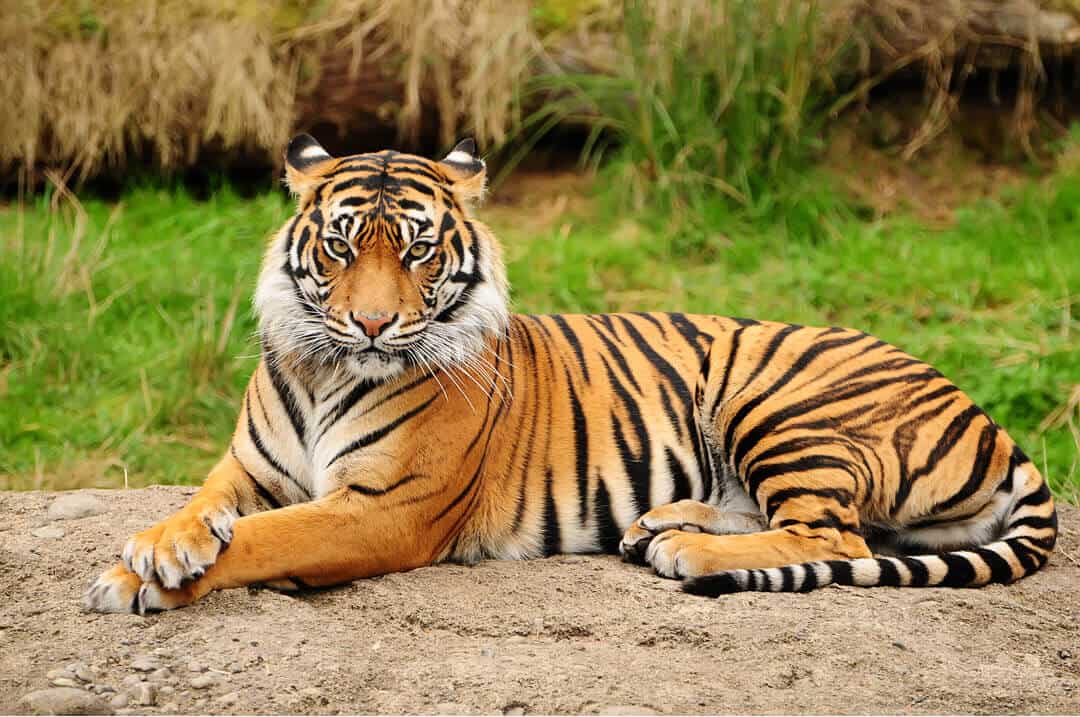
















0 Comments